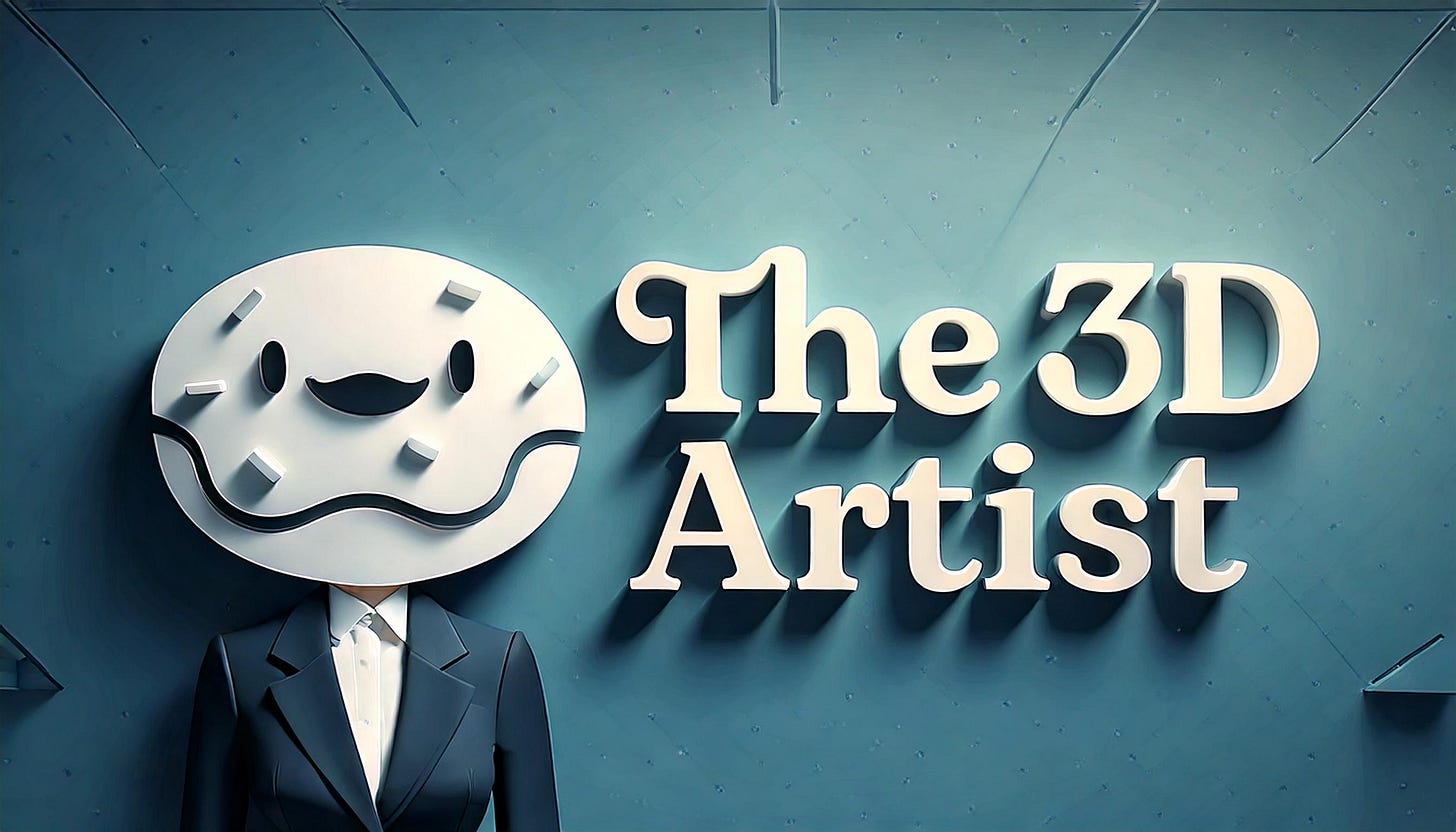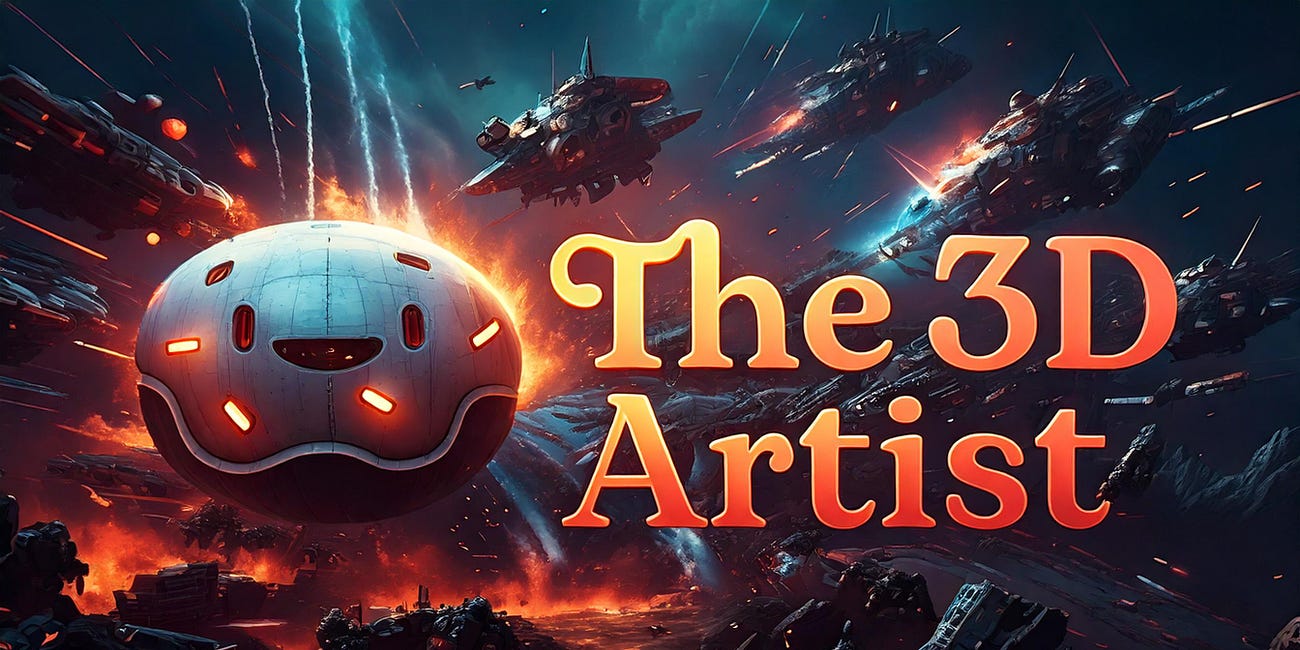For most artists entering this industry—whether it’s video games, visual effects, animation, or another creative field—there’s never a need to stop and ask, Why am I doing 3D? It’s inherent in the process. 3D is the foundation, the medium, and the final output.
It’s like a pilot needing a plane or a corrupt police officer needing a mustache - It’s just part of the job!
But as 3D technology continues to expand into new industries, its role changes. In industries like fashion, footwear, industrial design, architecture, and product visualization, 3D is not the final output. A fashion designer, for example, still produces garments. A furniture company still manufactures physical chairs. 3D has entered these industries not as the core product, but as a way to make their processes faster, cheaper, and more efficient.
That shift creates a fundamental challenge: in these industries, the value of 3D isn’t obvious. Someone has to make the case for it.
The Assumption That Almost Cost Me
When I transitioned from the entertainment industry—where 3D’s value was obvious—to working with companies in fashion, product design, and marketing, I initially failed to grasp this. I assumed these industries already understood why 3D was necessary, just as I did. So I approached them like I would in the entertainment world: showcasing cool features, demonstrating how quickly you could create photorealistic output, and highlighting speed and efficiency.
But time and again, I ran into the same wall: That’s cool, but we’ve been successfull doing it without 3D for decades. Why should we change?
That’s when it hit me: I wasn’t making the right argument. These companies didn’t need a demonstration of how 3D works—they needed a compelling reason to care why it mattered to their business.
Starting With the Why
If you’re a 3D artist working outside of entertainment, there will come a time when you need to justify your work. And when that happens, don’t make the mistake I did. Don’t start by showing off cool processes or flashy renders. Before you get into any technical details, you need to answer one fundamental question:
Why does this matter to them?
For most businesses, that boils down to three things:
Saving Money – Does 3D reduce costs? Can it eliminate expensive prototypes, cut shipping costs, or streamline manufacturing? Of course it does. Show them how.
Saving Time – Does 3D speed up workflows? Can it reduce design iterations or shorten development cycles? Absolutely. Show them!
Achieving Business Goals – Does 3D help them meet their specific objectives, whether that’s sustainability, product personalization, or expanding product lines? Yes! All of the above!!
The key is to align your argument with what the company values. And here’s where it gets tricky: different companies—and even different people within the same company—will have different priorities.
Understanding Your Audience
In a small business, saving money is almost always the top priority. If you can prove through past experiences that 3D cuts costs without too much of a pain in transitioning, you’ll almost always get buy-in.
But in a large corporation, the motivations shift. A designer at a global fashion brand might not care about saving the company millions—they might be measured on sustainability initiatives, increasing the number of SKUs, or improving design flexibility. A marketing executive might care more about how 3D can reduce time-to-market or create a more engaging online shopping experience.
This is why it’s crucial to understand who you’re talking to and frame your argument accordingly. What are they being evaluated on? What does success look like for them? Once you know that, you can show how 3D helps them achieve it.
The Revolution is Already Happening
I wouldn’t be taking the time to make these points if I didn’t feel in my bones that they are the right move. Once people adopt 3D workflows, they rarely go back.
I have yet to meet a reasonable company that fully integrated 3D into their process and later said, You know what? Let’s do things the old way instead. The benefits—speed, efficiency, cost savings—are too compelling.
But knowing that we see the value isn’t enough. We have to communicate it effectively.
Most of us got into 3D because we loved it, not because we wanted to learn business strategy. But if you’re working in an industry where 3D isn’t the default, learning to speak the language of business is one of the most valuable skills you can develop. Because at the end of the day, if you can’t articulate why 3D matters in a way that resonates with decision-makers, it won’t matter how great your work is.
And that’s a challenge worth mastering.
The 3D Artist Community Updates
This week, we are thrilled to be joined by Adriel Meka.
Adriel is a Canadian-American animator and illustrator and has worked on hit shows like Moon Girl and Devil Dinosaur & Monster High, directed the short film Camp Kona, and illustrated children's books including I Am a Triathlete and Kulu the Wise Turtle.
3D Merch is here and we have a new hoodie!
3D News of the Week
School of Motion Launches Blender for 3D Artist Course - School of Motion (Not sponsored → I just genuinely think it’s a great way to learn Blender)
Check Out This Collection of Digital Clay-Like Sculpts Made with 3DCoat - 80.lv
The tech to build the holodeck - The Verge
- Blue Sky
3D Tutorial
New 3D Job Openings!!!
Usually, I stick to sharing job opportunities outside of entertainment to highlight the broader range of possibilities for everyone. But this week, I’m making an exception—because, well, it’s a Senior 3D Generalist role at ILM with a salary range of
3D Job Spreadsheet
Link to Google Doc With A TON of Jobs in Animation (not operated by me)
Hello! Michael Tanzillo here. I am the Head of Technical Artists with the Substance 3D Growth team at Adobe. Previously, I was a Senior Artist on animated films at Blue Sky Studios/Disney with credits including three Ice Age movies, two Rios, Peanuts, Ferdinand, Spies in Disguise, and Epic.
In addition to his work as an artist, I am the Co-Author of the book Lighting for Animation: The Visual Art of Storytelling and the Co-Founder of The Academy of Animated Art, an online school that has helped hundreds of artists around the world begin careers in Animation, Visual Effects, and Digital Imaging. I also created The 3D Artist Community on Skool and this newsletter.
www.michaeltanzillo.com
Free 3D Tutorials on the Michael Tanzillo YouTube Channel
Thanks for reading The 3D Artist! Subscribe for free to receive new posts and support my work. All views and opinions are my own!









